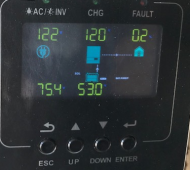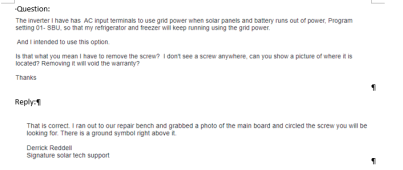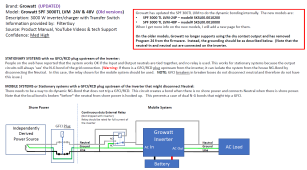The way Growatt has mishandled this is unforgivable!!!! They made a fundamental change to the product and 1) Did not change the model number and 2) Did not notify distributors and customers. Attached is an email thread I had with the US Growatt support team. If you read through it they explicitly state they changed the product to do the bonding internally and to jumper the neutrals on the older versions.
Feel free to forward the document to Sig solar.
Not having Option 24 means you have the new firmware, but it does not tell you if it is the new hardware. The first thing you should do is to check the continuity between Neutral and Ground when the inverter is completely disconnected. If you find continuity (as others have), then there is clearly a G-N bond and you have the newer version. With the newer version, you should *not* do the relay and Neutral jumper.
So people reading the thread can see what we are talking about, here is the circuit.
View attachment 98855
As mentioned above,
this should NOT be implemented if you have the new version of the hardware.
I probably should have indicated earth grounding in the picture. Perhaps this is better:
View attachment 98865
Either way when plugged in but no power, there will be no neutral connection between the AC Source and the Growatt so there will not be two NG bonds. Furthermore, there are no loops in the Equipment Grounding conductor.








